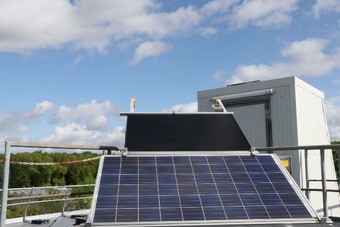Optimizing the use of renewable energy
Increasing energy demand combined with the decreasing use of fossil fuels makes an optimized use of renewable energy from solar and wind power highly important for society. One optimal use is finding and characterizing locations where a certain type of renewable energy potential can be most efficiently used. Another is accurately knowing what solar insulation and wind speed can be expected in the next hours in order to be able to adjust the capacities of other energy sources.
CPEX-Lab develops and carries out remote sensing observations of the cloudy Atmospheric Boundary Layer (ABL) which will be tested for impacting short-term forecasts of solar radiation and wind. In contrast to classical 2m observations, CPEX-LAB microwave radiometer, precipitation&cloud radar and Doppler lidar observations provide observations throughout the ABL which can lead to improving forecasts of solar and wind power.
In addition, these observations are also tested for improving high-resolution (~1 km) reanalysis. A re-analysis being the best 4D representation of the atmosphere you can reconstruct. This is carried out in close collaboration with DWD within the Hans-Ertl-Center for Weather Research (HErZ). On the one hand, CPEX-LAB observations can be used to evaluate the reanalysis, on the other hand CPEX-LAB observations can be assimilated into the reanalysis and their impact for improving the reanalysis is quantified.
In summary, CPEX Lab is performing research on the impact of novel ground-based remote sensing observations for renewable energy applications.


